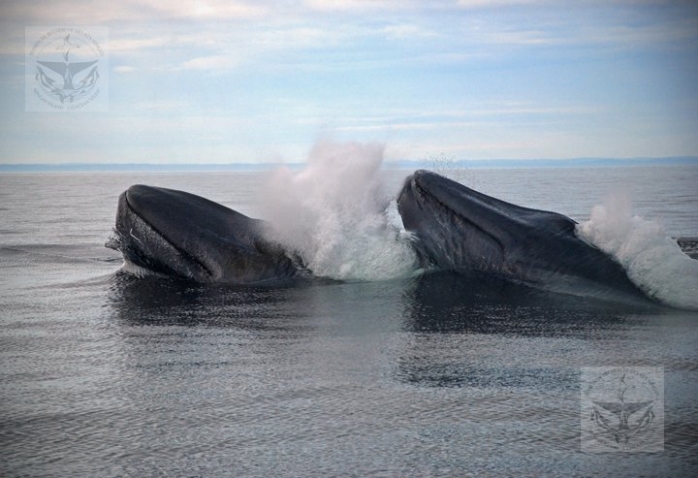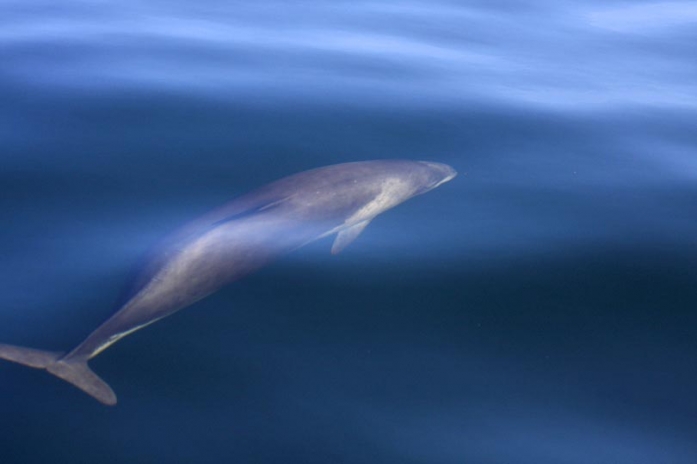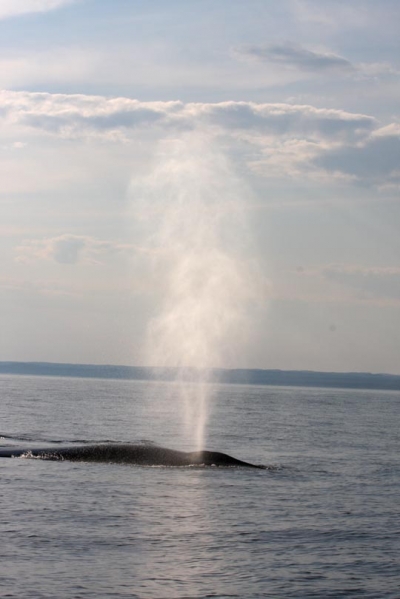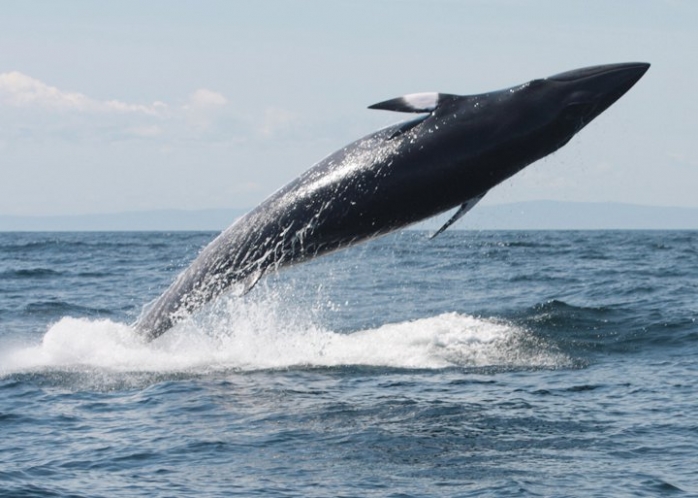Endangered species
List of endangered species likely to become entangled in vertical ropes
Blue whale
Balaenoptera musculus
Family: Balaenopteridae
Size: 20 to 25 meters. The largest specimen ever caught measured 33.58 meters in South Georgia.
Weight: 75 to 130 metric tons
Life expectancy: Estimated around 70 to 90 years, with an average generation time of 31 years.
Food preferences: Mainly krill (euphausiids) and copepods. St. Lawrence blue whales are known to feed mainly on two species of krill (Meganyctiphanes norvegica and Thysanoessa raschii).
Behavior: They are usually found alone or in pairs, and occasionally in small groups. They do, however, sometimes gather in large numbers in areas where their prey is abundant.

Humpback whale
Megaptera novaeangliae
Family: Balaenopteridae
Height: 12-13 meters on average. Females can reach 16 meters long
Weight: 25 to 30 metric tons
Life expectancy: Up to 80 years of age
Description: The humpback whale is a medium-sized whale, which is probably best known for its long migrations between 'feeding' areas at high latitudes and breeding areas in tropical regions. This rorqual whale comes to feed in the productive waters of the St. Lawrence during the summer when zooplankton and fish resources are abundant. Many animals have been recorded in this region year after year for more than 30 years, and return each time with their young.

Harbour porpoise
Phocoena phocoena
Family: Phococenidae
Size: From 1 to 2 meters
Weight: From 27 to 88 kilograms
Life expectancy: Up to 24 years
Food preferences: Small schools of fish such as herring, capelin, sprat, silver hake and cephalopods (octopus).
Description: The harbour porpoise is the cetacean most often seen in our St. Lawrence study area. Like all porpoise species, it differs from dolphins by its small, flat, spatula-like teeth and its small size. The dorsal side of its body is dark grey and gradually fades to become light grey and then white on the ventral side. The harbour porpoise has a very small rostrum, a simple blowhole and a prominent dorsal fin.

Fin whale
Balaenoptera physalus
Family: Balaenopteridae
Size: From 20 to 24 meters
Weight: 40 to 85 metric tons
Life expectancy: 75 to 100 years
Food preferences: Feeds on euphausiidae (krill), capelin, sand eels and juvenile herring.
Description: The fin whale is the second largest whale after the blue whale and has a smooth body with a hydrodynamic shape. It is easily identifiable by the presence of a chevron on the right side of the body, just behind the head, with colors that follow one another from gray to white. The right lower jaw is white. The fin whale presents an asymmetric coloration of the jaw and baleen plates, the left side of which is dark grey.

Minke Whale
Balaenoptera acutorostrata
Family: Balaenopteridae
Height: 8-9 meters on average, with a maximum height of 12 meters.
Weight: 6 to 8 metric tons
Life expectancy: 20 to 30 years
Food preferences: Feeds on schools of fish such as sand lance, capelin, juvenile herring and euphausiids (krill).
Description: As its name suggests, the minke whale is the smallest species of the Balaenoptera family, with a hydrodynamic body and easily identifiable thanks to the presence of a white band or "mitt" on each pectoral fin, which is short and pointed. The dorsal side ranges from dark grey to light grey, often including a light grey chevron drawn on the back of the head followed by a curved fin. They have two rows of 230 to 360 baleen plates hanging from each side of their upper jaw. The breath of this species is rarely visible. They are among the rare cetaceans still hunted in the world, especially in Norway, Iceland and Japan. Of all the whales present in the Gulf of St. Lawrence, the minke whale is the species about which the least is known.

Mingan Island Cetacean Study (MICS)
All data and photos on this page come from the Mingan Island Cetacean Study, a non-profit organization dedicated to the ecological study of marine mammals. Founded in 1979 by Richard Sears, the station was the first to conduct long-term research on cetaceans in the Gulf of St. Lawrence, particularly the blue whale, an endangered species.